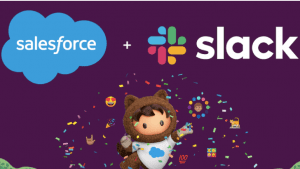
Yet it’s important to distinguish between tech sector maneuvering and buy-side reality.
In this case, it is critical that buyers do not model their customer experience (CX) strategy on Salesforce’s product strategy. If they do, they’ll lose years of time and resources to a fundamental misconception in CX today: the myth that the customer sits at the center of the business universe.
In fact, the Slack acquisition is an attempt to fix this fundamental conceptual flaw. Enterprises need not make that mistake.
Customers are not fixed
In an omnichannel world, the idea that the customer can be anchored at the center of an ecosystem is laughable. This is the notion of most CRM systems that sit at the center of a hub-and-spoke architecture, connecting out to other systems and endpoints where customers engage. Hub-and-spoke models, however, just don’t scale very well. The customer is engaging at more endpoints than ever before, with more products (including services) than ever before, many of which are made or supported by more partners than ever before.
It’s no surprise that CX professionals regularly bemoan silos and fragmentation. One survey, conducted by the Harris Poll, sums it up nicely: “The survey validates that fragmentation is largely responsible for the CX gap. Data fragmentation, system fragmentation, and organizational fragmentation all contribute to the frustration for consumers and marketers alike in the delivery and receipt of a seamless, omnichannel customer experience.”
Of course, the defining trait of the modern economy is fragmentation. The supply side is almost entirely unintegrated, and the demand side is… borderline schizophrenic. Even within a single vendor ecosystem the fragmentation can be dizzying. Salesforce alone has over a dozen products, with over 3,000 standalone apps on their AppExchange.
Will Slack hold together the Salesforce universe?
Slack will act as a sort of messaging mesh across the entire Salesforce ecosystem. But that’s a hero’s journey nobody wants to go on. Slack will be tasked with holding together a universe that’s expanding at an unsustainable rate.
In this CRM universe, your customer is still a fixed point in the center of the system. Salesforce needs Slack in order to extend the CRM-centered customer experience to all these new endpoints in an expanding universe. Ultimately, Slack does give customers and employees a more flexible means to hunt for knowledge, which is, unfortunately, the best you can do in a customer-centric model. If the customer is at the center, knowledge and resources are scattered around the periphery.
This strategy makes sense for Salesforce, but there’s another way to look at it. The acquisition of Slack is actually a major admission: legacy CRM architectures are fraying at the edges, and there are more edges than ever before.
In the real world, products drive experiences
If you orient your thinking around products, which is the primary point of experience for the customer, it gets much easier to design and deliver great experiences. Salesforce can’t do this without cannibalizing its core CRM business. Their entire ecosystem depends on customer-centricity.
Salesforce is stuck with what they have built, certainly. But enterprises can still build product-centric CX strategies, even if they’re using Salesforce.
It starts with a relentless focus on product knowledge, not just products. The key is to put product knowledge in motion, so that customers and employees always have instant, in-context access to that knowledge. In other words, if you acknowledge the customer is always in motion, then knowledge must always be in motion.
What is a great customer experience if not the sensation of instant access to answers, no matter how or where you use a product?
To achieve this, enterprises need to focus on putting knowledge wherever customers engage, rather than routing customers through a series of systems to eventually arrive at the knowledge they seek. The good news is that this can largely be accomplished by a change of perspective and tactics, rather than a major technology purchase. In the event an especially intractable CRM system sits at the center of the CX stack, it can still be augmented by home-grown customizations or plug-in solutions that support a product-centric approach.
Does vendor strategy matter?
The Slack acquisition offers an important reminder to enterprises. Your CRM vendor is not a way of life.
Businesses decide how to architect their own CX strategy. At minimum, software should support it. But at its best, software can force multiply it.
It has been 17 years since Nick Carr declared “IT Doesn’t Matter” in HBR. His intent at the time was to rewrite the way businesses incorporate IT into their business strategy. He broke us free from the “IT as business strategy” mindset of the 1990s.
Unfortunately, the winner-take-all era of the tech sector gave birth to another idea. If you could gobble up enough market share, you could tell buyers what to think and how to think. If you were really good, maybe you could tell them not to think at all.
Here’s a simple alternative, an idea that has stood the test of time: think for yourself. When it comes to your customer experience, the lifeblood of your business, why would you let anyone else do the thinking for you?

We like to imagine a world where business is personal again. Boomtown is the only customer experience technology that orients around delivering experiences rather than merely measuring them. The foundation for a remarkable customer experience is knowledge delivered on-time and in-context. That’s why we’re on a mission to ensure every question is answered accurately and every problem is solved completely. Using AI, we make essential business knowledge instantly accessible to anyone who needs it, whether they be customers, teams, and partners.

























